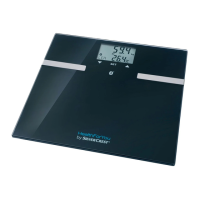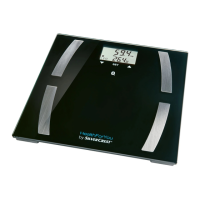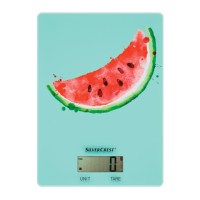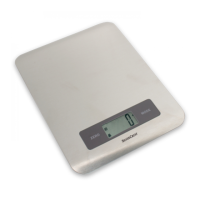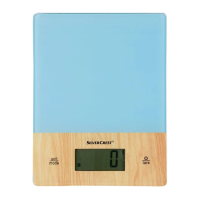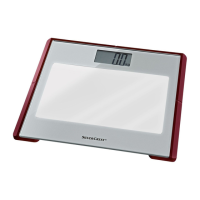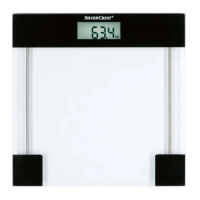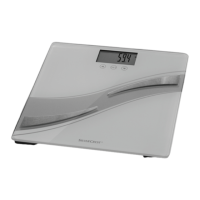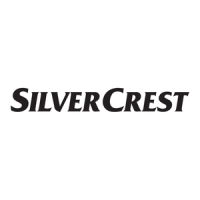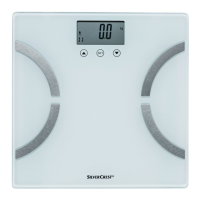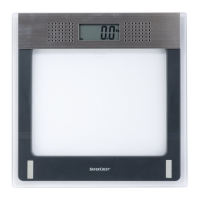14 GB/IE/NI
Evaluating Results / TroubleshootingEvaluating Results
Age low normal high very
high
40-49 <20
% 20– 25
% 25.1–30 %
>30.1 %
50-59 <21
% 21– 26
% 26.1–31
%
>31.1 %
60-69 <22
% 22– 27
% 27.1–32
%
>32.1 %
70-100 <23
% 23– 28
% 28.1–33
%
>33.1 %
The values will often be lower in athletes. Depend-
ing on the sport, training intensity and the physical
condition the values may even be lower than the
guidelines specified. Please note, extremely low
values may indicate health hazards.
Water Percentage
The amount of water in the body in % is typically
inside the following ranges:
Male
Age poor good excellent
10–100 <50 % 50–65 % >65 %
Female
Age poor good excellent
10 –100 <45 % 45–60 % >60 %
Body fat holds relatively little water. The water per-
centage in persons with a high body fat percentage
may therefore be below these guidelines. In endur-
ance athletes, on the other hand, the values may
be higher due to the low body fat percentage and
the high muscle mass.
The water percentage determined using these
diagnostic scales is not suitable for drawing medi-
cal conclusions on e.g. age-related water retention.
If necessary, consult your physician. The general
objective is a high water percentage.
Muscle Mass
The muscle mass in % is normally within the follow-
ing ranges:
Male
Age low normal high
10–14 <44 % 44–57 % >57 %
15–19 <43 % 43–56 % >56 %
20–29 <42 % 42-54 % >54 %
30–39 <41 % 41–52 % >52 %
40–49 <40 % 40–50 % >50 %
50–59 <39 % 39–48 % >48 %
60–69 <38 % 38–47 % >47 %
70–100 <37 % 37–46 % >46 %
Female
Age low normal high
10–14 <36 % 36–43 % >43 %
15–19 <35 % 35–41 % >41 %
20–29 <34 % 34–39 % >39 %
30–39 <33 % 33–38 % >38 %
40–49 <31 % 31–36 % >36 %
50–59 <29 % 29–34 % >34 %
60–69 <28 % 28–33 % >33 %
70–100 <27 % 27–32 % >32 %
Bone Mass
Like the rest of our body, bone in the body is subject
to a natural process of building, loss and ageing.
In childhood the bone mass increases rapidly,
reaching its maximum at 30 to 40 years of age.
With increasing age the bone mass then decreases
again. A healthy diet (particularly calcium and
vitamin D) and regular exercise can prevent this to
some extent. By building muscle you can further
improve the health of your skeleton.
Note: These diagnostic scales do not show the
calcium content of the bones but determines the
weight of all elements of the bones (organic sub-
stances, inorganic substances and water).
Although the bone mass can only be influenced
minimally, it does fluctuate slightly within factors
(weight, height, age, gender). There are no recog-
nised guidelines or recommendations.

